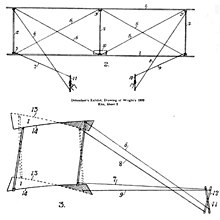Post Date
June,
27
2024
What is an Aeroplane?
An aeroplane, often called an airplane in American English, is a powered flying vehicle with fixed wings and engines. It is designed to transport passengers and cargo through the air.
History of Flight
The history of flight dates back to ancient times, but modern aviation began in the early 20th century with the invention of powered, controlled aeroplanes.
Wright Brothers
The Wright brothers, Orville and Wilbur Wright, are credited with inventing and building the world's first successful aeroplane. On December 17, 1903, they achieved the first controlled, sustained flight of a powered, heavier-than-air aircraft.

How Do Planes Fly? For Kids
Planes fly using the principles of aerodynamics. Wings generate lift when air flows over them, and engines provide thrust to move the plane forward. Control surfaces like ailerons and rudders help pilots steer the aircraft.
Environmental Impact of Flying
Flying has significant environmental impacts due to carbon emissions and other pollutants released by aircraft engines. It contributes to climate change and air quality degradation, although efforts are underway to develop more fuel-efficient and sustainable aviation technologies.
Ten Fun Facts about Planes and Flying
- First Flight: The Wright brothers' first flight covered 120 feet and lasted 12 seconds.
- Jet Engines: Jet engines, which power most commercial planes today, became widely used after World War II.
- Supersonic Flight: The Concorde was a commercial airliner capable of flying faster than the speed of sound.
- Largest Passenger Plane: The Airbus A380 is the largest passenger plane, capable of carrying over 800 passengers.
- Longest Flight: The longest non-stop commercial flight is over 18 hours from Singapore to New York.
- Black Box: The "black box" is a device that records flight data and cockpit conversations to aid investigations in case of accidents.
- Airport Codes: Airport codes like JFK (John F. Kennedy) and LHR (London Heathrow) are based on historic names or nearby landmarks.
- Winglets: Winglets on aircraft wings reduce drag and improve fuel efficiency.
- Emergency Slides: Modern planes have inflatable emergency slides that deploy in case of emergency landings.
- Commercial Aviation: Over 100,000 flights take off daily, transporting millions of passengers around the world.
Frequently Asked Questions
1. What is an aeroplane?
An aeroplane is a powered flying vehicle with fixed wings, used for transporting passengers and cargo through the air.
2. When were planes invented?
Modern aeroplanes were invented in the early 20th century, with the Wright brothers achieving the first successful flight in 1903.
3. How do planes fly?
Planes fly by generating lift with their wings and thrust with their engines, allowing them to move through the air.
4. What is the environmental impact of flying?
Flying contributes to climate change and air pollution due to carbon emissions from aircraft engines.
5. What are some interesting facts about planes?
Interesting facts include the development of jet engines, the largest passenger planes, and the longest commercial flights.

